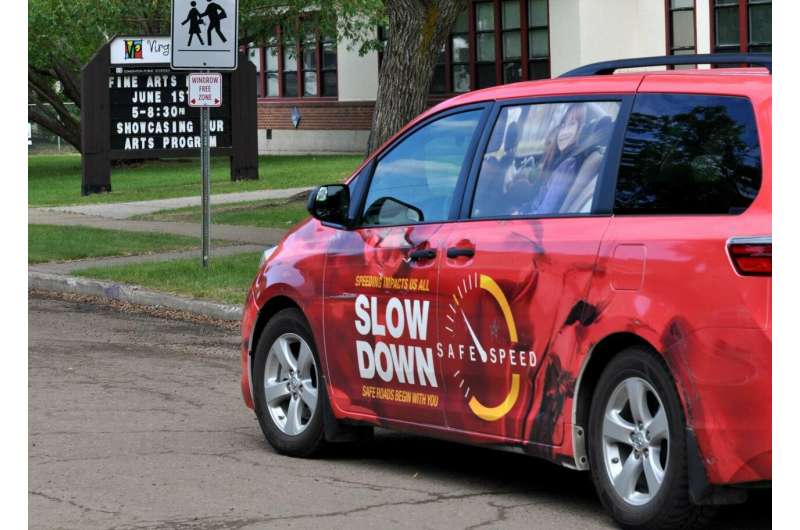Automated speed enforcement doesn't just reduce collisions—it helps reduce crime

It's widely accepted that automated photo enforcement programs targeting speeding help reduce collisions and promote safe driving. Now a new University of British Columbia study suggests they can also significantly reduce crime in the neighbourhoods in which they are deployed.
Researchers analyzed traffic-related data collected between 2013 and 2015 in the western Canadian city of Edmonton and found that vehicle collisions dropped in the areas where automated speed enforcement units were used. But they also found that crime—specifically property-related criminal incidents—declined significantly.
"Our results prove that automated speed enforcement, which uses cameras to detect and capture images of vehicles exceeding the speed limit, reduces collisions as well as discourages crime," said Shewkar Ibrahim, a traffic safety engineer for the City of Edmonton who led the research for her Ph.D. studies in civil engineering at UBC.
"People intending to commit crime are usually deterred by the presence of authority," said Ibrahim. "Since criminals also tend to show unsafe driving behaviours, you can expect to see fewer collisions due to the presence of automated speed enforcement."
Building on their analysis, the researchers also developed a planning chart that enforcement agencies can use to effectively plan the deployment of their mobile speed enforcement units.
"Using this tool, we can see how many collisions can be prevented by spending a certain number of hours at a given location," said Ibrahim. "We can then assign resources to where they are most needed."
Study co-author Tarek Sayed says the research confirms the benefits of automated speed enforcement.
"Automated enforcement has always been a contentious issue, and so having this evidence to show its dual benefits will hopefully promote its use as a tool for improving community safety," said Sayed, a UBC professor of civil engineering and Canada Research Chair in Transportation Safety and Advanced Mobility who supervised the work.
The results also suggest that automated enforcement, which requires fewer resources to implement, can be a good alternative to manned enforcement. "This is the first study to show that automated enforcement is absolutely effective in reducing both collisions and crimes," added Sayed.
Provided by University of British Columbia



















